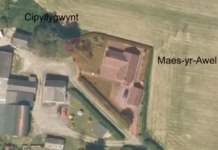A capital lease or finance lease is an agreement in which the lessor transfers the leased asset to the lessee. In this process, the renter holds assets and liabilities that are associated with the lease. A capital lease agreement is considered a long-term agreement and non-cancellable in nature when the lease period is over. Concerning the amendment of the Financial Accounting Standards Board (FASB) 2016, companies are required to capitalize on their leases with above one year of contract terms.
Here are some characteristics of the capital lease:
How capital lease works
With companies capitalizing on all leases, the agreement can heavily influence their financial statements, says Ian Mausner. The terms can affect depreciation expense, interest expense, liabilities and assets. There are conditions that define a capital lease. These include the coverage of 75% or more of the asset’s utility, a purchase option with a price that is less than the market value of an asset, and an agreement that settles the ownership in favor of the lessee after the lease period. The value of the lease must be 90% or more of the market value of the asset.
The main characteristic of a capital lease agreement is the granting of asset ownership to the lessee, while the lessor is entitled to the temporary use of an asset.
Capital lease versus operating lease
In general, a capital lease is the acquisition of an asset, whereas an operating lease is a contract for the allowance of the use of the asset while the lessor keeps the ownership rights. There are certain structures that classify these leases in accounting treatment. While capital lease financing has an impact on a company’s balance sheet, the agreement of an operating company doesn’t count as expenses in the financial statement. Ian Mausner says that as you have learned the characteristics of the capital lease in the above discussion, let’s move on to the accounting treatment of operating lease.
An operating lease agreement is considered short-term leasing of assets because it is similar to renting of the asset, which involves no transfer of ownership rights to the lessee. The lease payments are recorded as operating expenses on the income statement. Since the lessee doesn’t own a share in the property, the financial transaction won’t enter the company’s balance sheet. This merits the lessee not to calculate the depreciation price of the rented asset.
Advantages of a capital lease and operating lease
A capital lease agreement serves tax benefits to the lessee since depreciation claim is allowed, asserting a reduction in taxable incomes. Meanwhile, an operating lease allows the company to replace or update the assets within the lease period. The lessee won’t face the risk of decadence of the asset because the ownership is still with the lessor.
Conclusion
According to Ian Mausner, both leases have their own pros and cons in terms of accounting and tax treatment. Considering the nature of the agreement, you can decide which one may suit your business requirement.

| [donate]
| Help keep news FREE for our readersSupporting your local community newspaper/online news outlet is crucial now more than ever. If you believe in independent journalism,then consider making a valuable contribution by making a one-time or monthly donation. We operate in rural areas where providing unbiased news can be challenging. |






















